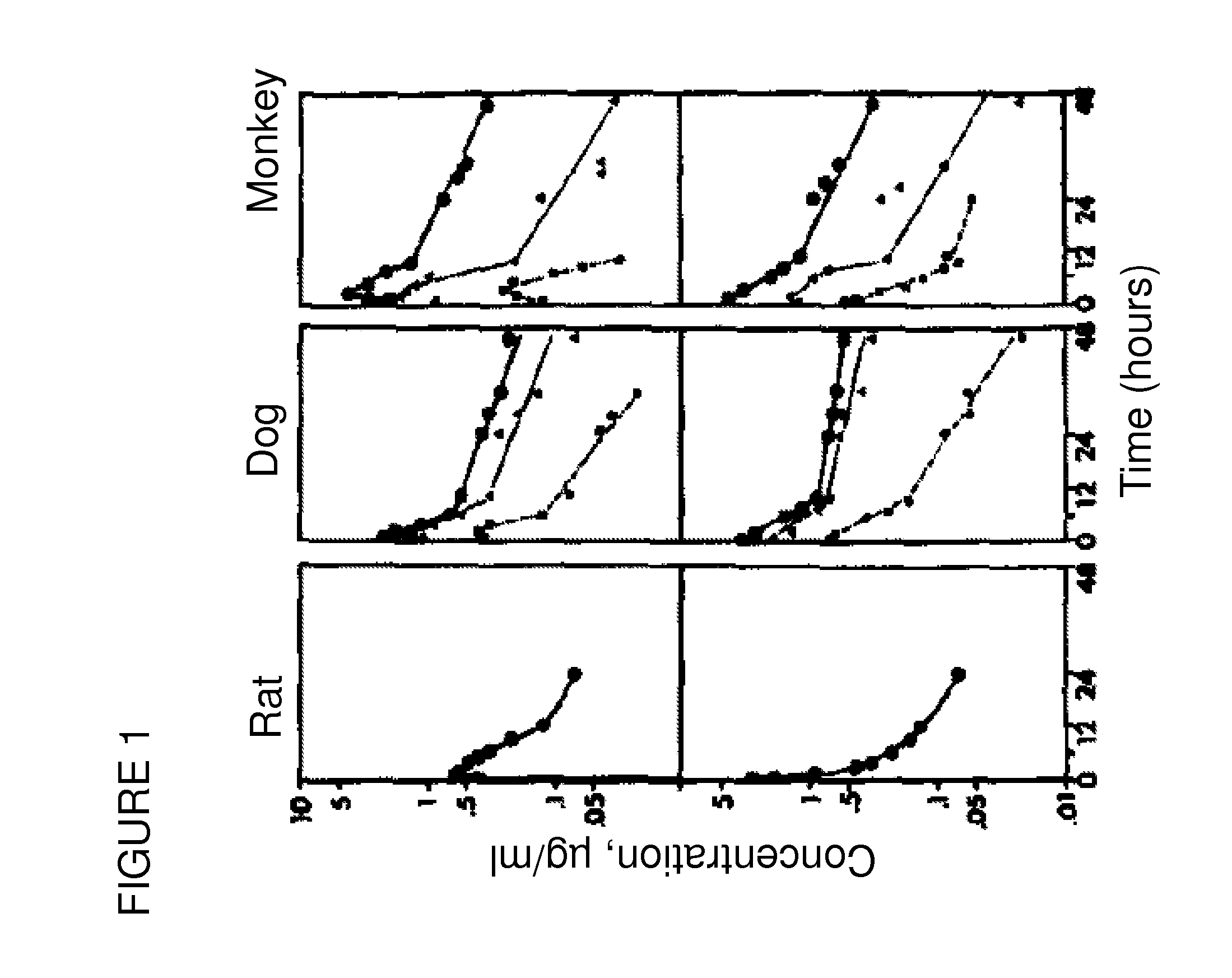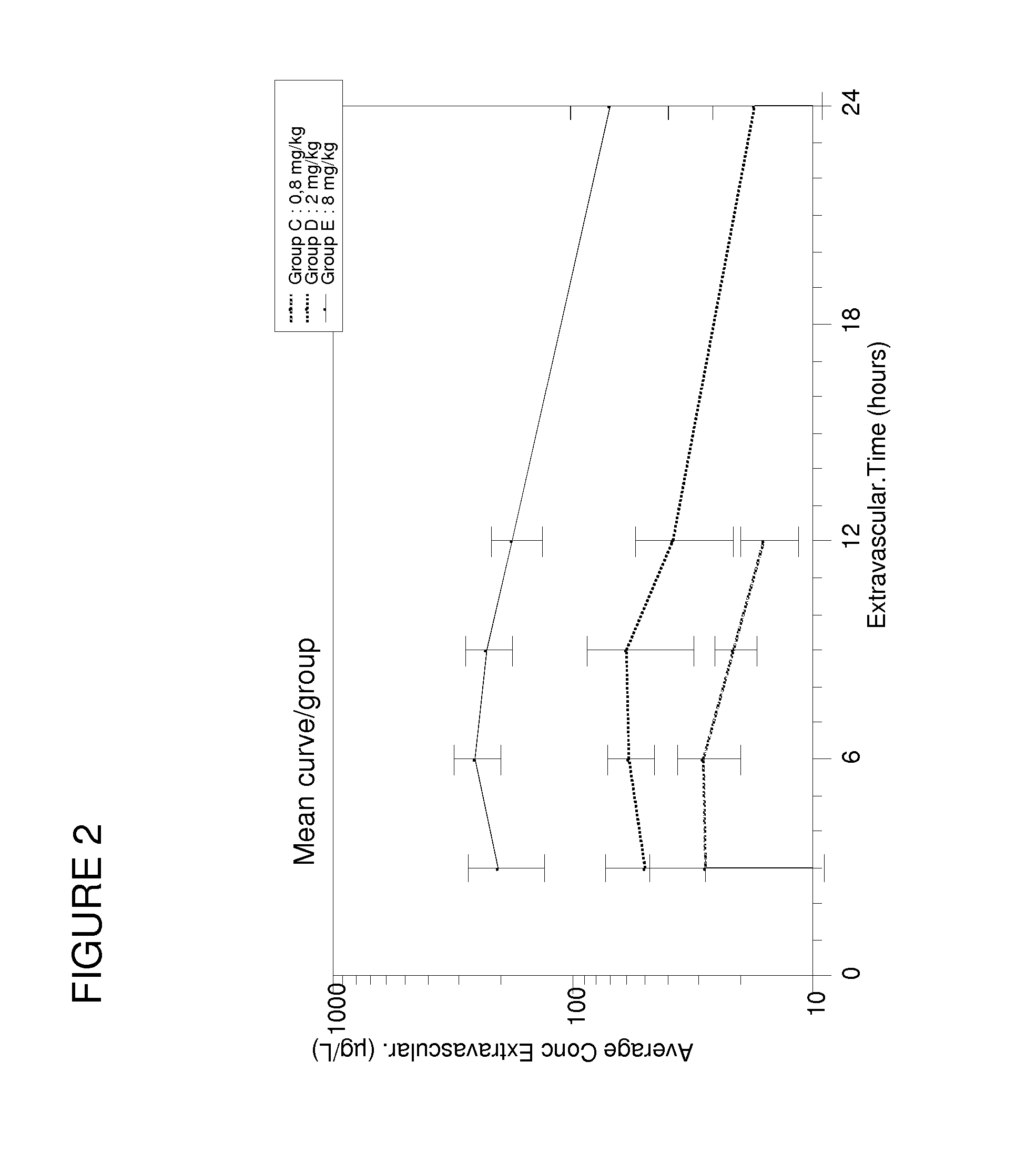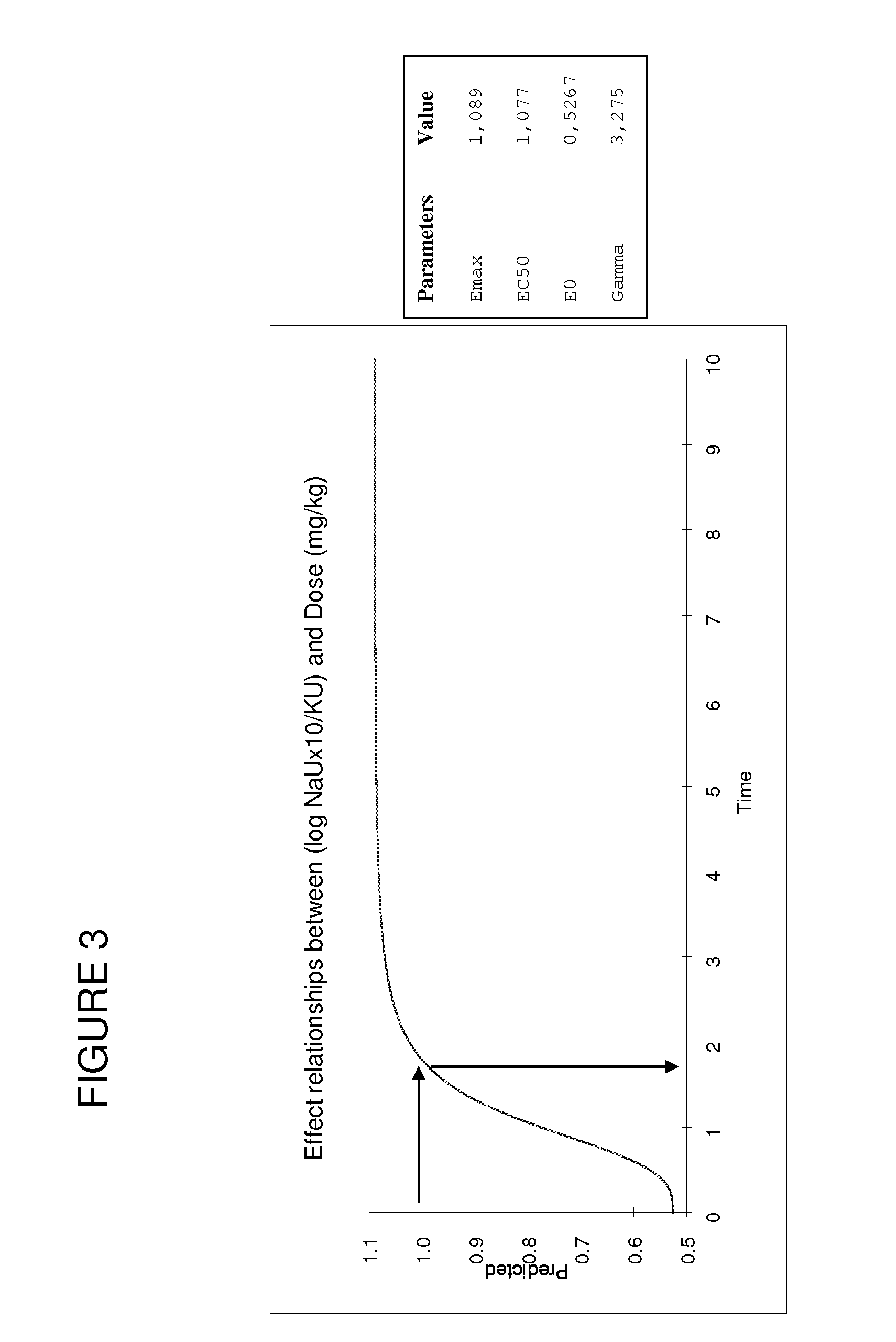Compositions and treatment of heart deficiency in non-human animals
a heart disease and non-human animal technology, applied in the field of compositions and treatment of heart disease in non-human animals, can solve the problems of generating heart failure, reducing mortality and/or morbidity quite significantly, and reducing mortality and/or morbidity. the effect of mortality and/or morbidity
- Summary
- Abstract
- Description
- Claims
- Application Information
AI Technical Summary
Benefits of technology
Problems solved by technology
Method used
Image
Examples
example 1
[0127]Pharmacokinetic studies on spironolactone for oral administration have been performed on different species, such as rats, dogs and monkeys by using marked spironolactone (22-14C spironolactone). The results have been presented in the form of logarithmic curves in FIG. 1, and show high plasma radioactivity percentage in rats (66%) and dogs (76%) and lower in monkeys (33%) after 4 hour oral administration of spironolactone.
[0128]It has been discovered according to the present invention that contrary to the doses used for treating human patients, the optimal dose of spironolactone for treating heart failure in pets such as dogs, cats, horses was close to 2 mg / kg / day. The changes in logarithmic values [(Na+]urinary×10 / [K+]urinary) induced by aldosterone have been measured after spironolactone treatment.
[0129]To conduct these studies, healthy beagle breed dogs (n=15) less than one year old, and weighing between 11.9 and 14.3 kg at the beginning of the study have been used. They hav...
example 2
[0143]Clinical studies were conducted on dogs affected by heart failure for assessing the long-term effects (14-15 months and 3 years) spironolactone-containing treatments in a dose of 2 mg / kg / day, as well as a CEI (such as for instance benazepril chlorhydrate or enalapril, etc.).
[0144]Multicentre, randomised, double-blind placebo-controlled clinical studies were conducted. An example of study concerned 221 dogs, the diagnosis of heart failure relying on persisting symptoms of cardiomegaly or cardiomyopathy after a first CEI treatment. Out of 221 dogs, 109 received orally a daily dose of 2 mg / kg / day spironolactone in the form of pellets of 10 mg, 40 mg and / or 80 mg in combination with a CEI (for instance benazepril chlorhydrate in a dose of 0.25 mg / kg / day). The 112-dog placebo group received a placebo in combination with a CEI (for instance benazepril chlorhydrate in a dose of 0.25 mg / kg / day).
[0145]For gauging the effects of the treatment, both groups were examined five times, i.e.,...
example 3
[0150]The plasmatic potassium concentrations (mmol / L) were measured during the treatments. It has thus been demonstrated that the daily dose of spironolactone of 2 mg / kg / day which is normally a diuretic dose in men and dogs, did not cause any variation in kaliemia or only low transient variations in kaliemia in dogs. The results of the kaliemia measurements made during the clinical studies described previously have been given in Table 5 below. Only sporadic case of low or moderate hyperkaliemia could be observed and these events were transient. Indeed, these hyperkaliemia events could only be observed a couple of times during examinations, and some of them were present on day D1, before the beginning of the treatment.
TABLE 5Low and transientModerate andhyperkaliemiatransient(5.9 to 6.4 mmol / L)hyperkaliemiaGROUP ON(6.5 to 7.5 mmol / L)SPIRONOLACTONEPLACEBO GROUP3-month clinical study5210(6 analyses for theduration of the study)2-month clinical study3112(4 analyses for theduration of th...
PUM
| Property | Measurement | Unit |
|---|---|---|
| blood flow rate | aaaaa | aaaaa |
| pressure | aaaaa | aaaaa |
| arterial pressure | aaaaa | aaaaa |
Abstract
Description
Claims
Application Information
 Login to View More
Login to View More - R&D
- Intellectual Property
- Life Sciences
- Materials
- Tech Scout
- Unparalleled Data Quality
- Higher Quality Content
- 60% Fewer Hallucinations
Browse by: Latest US Patents, China's latest patents, Technical Efficacy Thesaurus, Application Domain, Technology Topic, Popular Technical Reports.
© 2025 PatSnap. All rights reserved.Legal|Privacy policy|Modern Slavery Act Transparency Statement|Sitemap|About US| Contact US: help@patsnap.com



